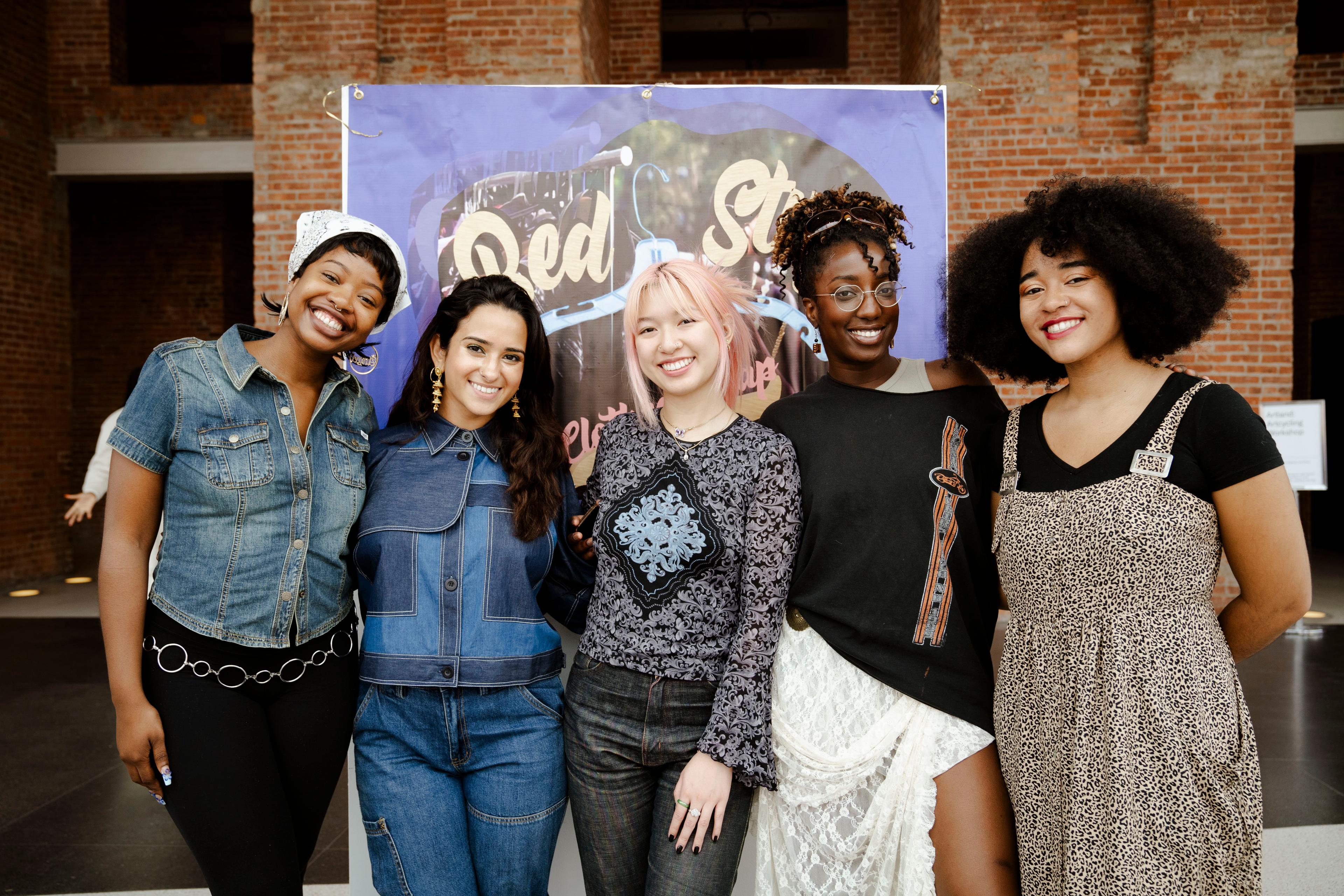
Bed Stuy Clothes Swap is not your average clothing exchange. Founder Akiera Charles held the first swap in front of her Brooklyn home in 2018, after noticing that many secondhand stores weren’t owned by Black and Brown people. She is now expanding the swaps across New York City. That effort includes a partnership with the Brooklyn Museum, which has hosted the organization’s swaps since 2023.
The events at the Museum include the exchange of clothing—people are encouraged to bring no more than 15 gently worn items—as well as related programming, often centered on climate justice. One swap included a talk about waste colonialism and an interactive game mapping out the supply chain of the fashion industry. An estimated 40 percent of all clothes end up as waste, and the landfills that receive them are often in communities of color.
“Our communities are the ones that are most impacted by waste and other extremes of environmental injustices,” Charles says. The programming, she adds, “allowed people to come away with some type of educational understanding of the work that we're doing.”
Even within the swap itself, there’s more engagement than simply putting clothes on a rack. Swappers are handed written prompts when they donate clothing, asking questions like, What was your connection with this clothing? How did this clothing make you feel? What came up when you gave this clothing away? What was a funny moment with this item of clothing? Their responses are included with the garments, so browsers encounter an item and its story at the same time.
“We're adding this human layer to the clothes,” Charles said, “and also thinking critically about all the other systems and pieces that impact our relationship to how the clothing even ended up in the swap itself.”
The swap also has an archival function: a segment of Bed Stuy Clothes Swap’s work, called Black Scraps, documents the relationship between Black community members and secondhand clothing. In the future, Charles sees this work extending to other groups, especially when it comes to tracing sustainable practices in New York City.
Fundamentally, the swap is working to reframe how we engage with our clothing—to consider who made it, where it came from, and where it will go when we’re no longer able or wanting to wear it.
“When you let go of your clothing, the story just doesn't end right there,” Charles said. “We should be so involved in the end cycles of our clothes.”





